Yep.
Category: Experiments
This is the boring/awesome engineering post. But first, data:
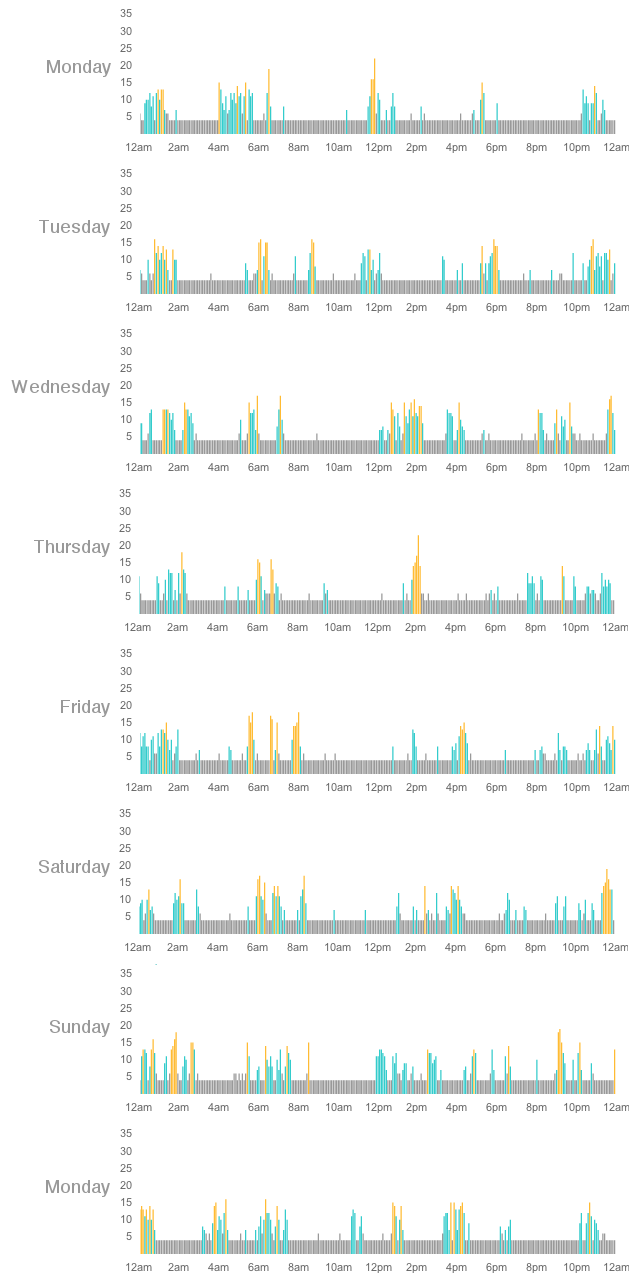
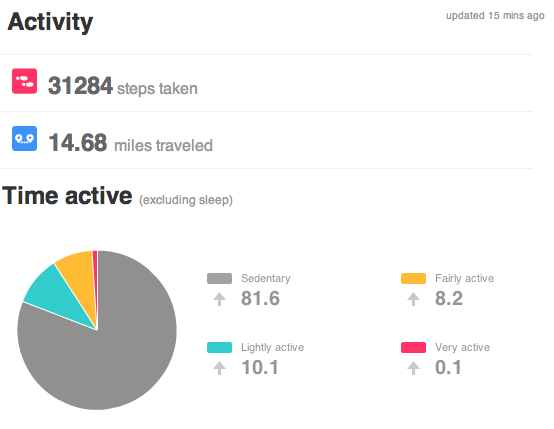
Observations:
- Sunday (30 Dec) was Snickers’ most active day yet, with 5477 “steps.”
- Not much to report this week, data-wise.
Notes:
- Mondays remain the charge-the-Fitbit day, usually from 7 or 8 until 10 P.M.
Modifying An Undercover Mouse
As I said last week, I would imagine that Snickers would grow bored of her new Undercover Mouse if it were just left on 24/7, so a little modification is needed to make it turn on and off on a schedule. “Fifteen minutes on, two hours off, repeat” sounds reasonable.
I would have liked to just wire the UM up to an AC adapter, put that adapter on a simple vacation timer, and be done. Sadly though, turning on the UM is a two-stage process: 1) connect power (usually batteries) and 2) use the button on top to select a mode (Low/Medium/Fast/Random). I could have automated this process using relays and such, but at that point it would just be easier to bypass the circuit board completely and directly control the motor. Plus, direct control would allow me to tweak exactly how the toy works. Direct control it is, then.
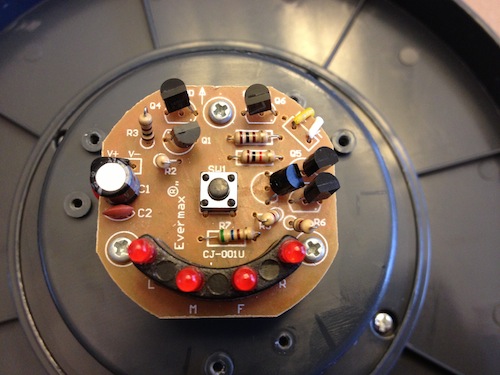
The guts of the UM are pretty simple: three AA batteries power a circuit board that controls a typical 5V hobby motor, which is in turn hooked to a few gears and ultimately to a little nub to which the wand attaches. After sampling the voltages across the motor leads when in use (Low = 2.4V, Medium = 2.6V, Fast = 2.7-2.8V), I snipped them from the circuit board, routed them through a convenient hole in the battery case, and soldered them to a single pair of 24 gauge wires that I pulled from an old piece of CAT5. (A note about heat shrink tube: wife’s hair dryer is apparently not hot enough, blowtorch is awesome but perhaps a bit too hot; even with an aluminum foil shield the base’s plastic was superficially dulled a bit.)
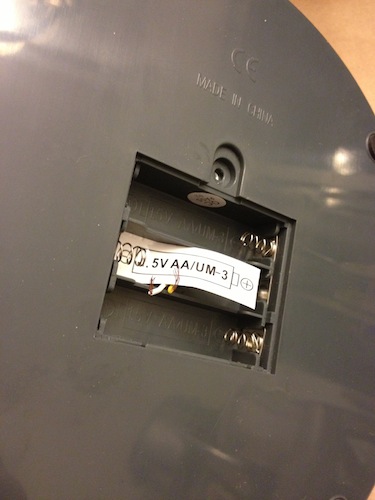
I taped the wires to the floor, and ran them into a SainSmart L293D Motor Drive Shield, a preassembled version of Adafruit’s fantastic mshield. With all the messy hardware done, I then wrote a nice little Arduino program to control everything.
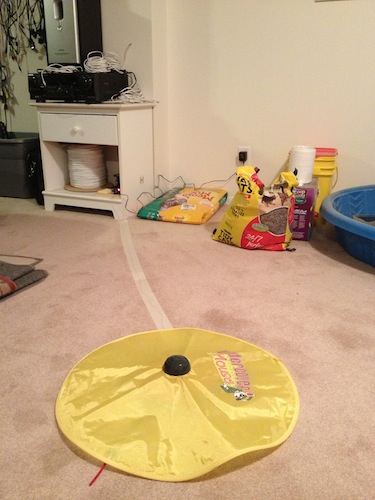
My Arduino lacks a real time clock, so we won’t be able to exactly pin activity from the Fitbit tracker to a particular session of Snickers playing with the UM. But with any luck, next week’s total activity numbers may show a slight improvement above the last three weeks of baseline.
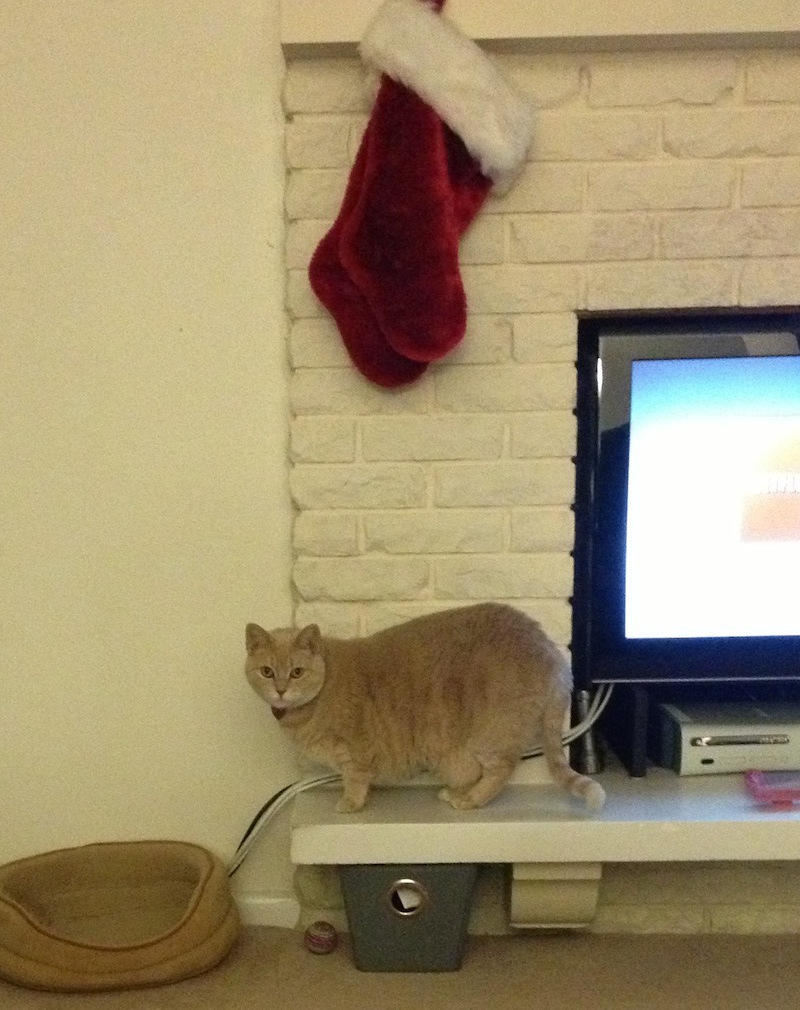
Another week of baseline data and the first tests of a new toy.
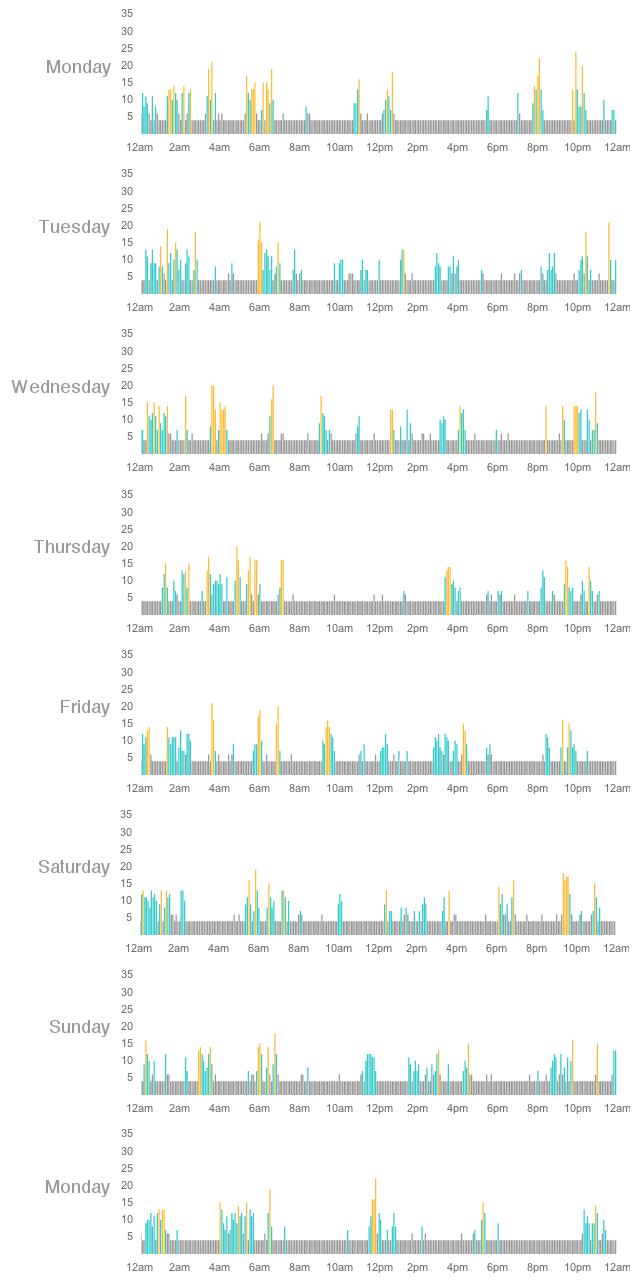
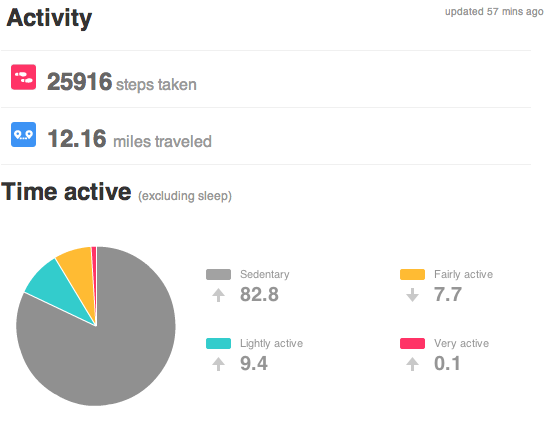
Observations:
- Several people who looked at last week’s data have pointed out that Snickers seems to go nuts from about midnight to 3 A.M. The same pattern continues this week. This definitely matches up with our anecdotal experience.
- Thursday’s daily breakdown shows what I initially thought was a swathe of pure laziness, but Thursday’s total step count is similar to that of other days. She was likely resting after an active night (of running up and down the hallway, batting cat toys beneath furniture, etc.).
Notes:
- Monday (24 Dec, at bottom) was once again charge-the-Fitbit day, this time from 8-10 P.M.
- Though I found a wonderfully-titled paper that would help in estimating Snickers’ stride length, I am still unsure how the Fitbit tracker’s steps correlate to actual cat steps, so the distance and step numbers remain dubious.
Toy: Undercover Mouse
Snickers has a few toys already: a scratching post, a toy mouse suspended from the ceiling with elastic, and a menagerie of other stuffed fabric playthings; usually mouse-shaped and usually missing ears or appendages. For this experiment I wanted a toy that would cause a noticeable bump in measurable activity. A buddy of mine recommended an Undercover Mouse.
Snickers’ initial impressions were less than favorable, probably due to the sound of the motor. My wife was able to gradually introduce her to it later and now she loves it. But if we just left it on 24/7 she would likely grow bored of it fairly quickly. The best way to exercise a cat with this toy may be to turn it on several times during the day and let the cat play with it long enough to burn some calories but not long enough for the cat to lose interest. If you have an erratic schedule you could theoretically do this manually, but no one has time for such things.
As soon as some new parts arrive, the engineering phase of this experiment will begin.


It has been one week since I attached a Fitbit tracker to my cat. Let’s look at the data.
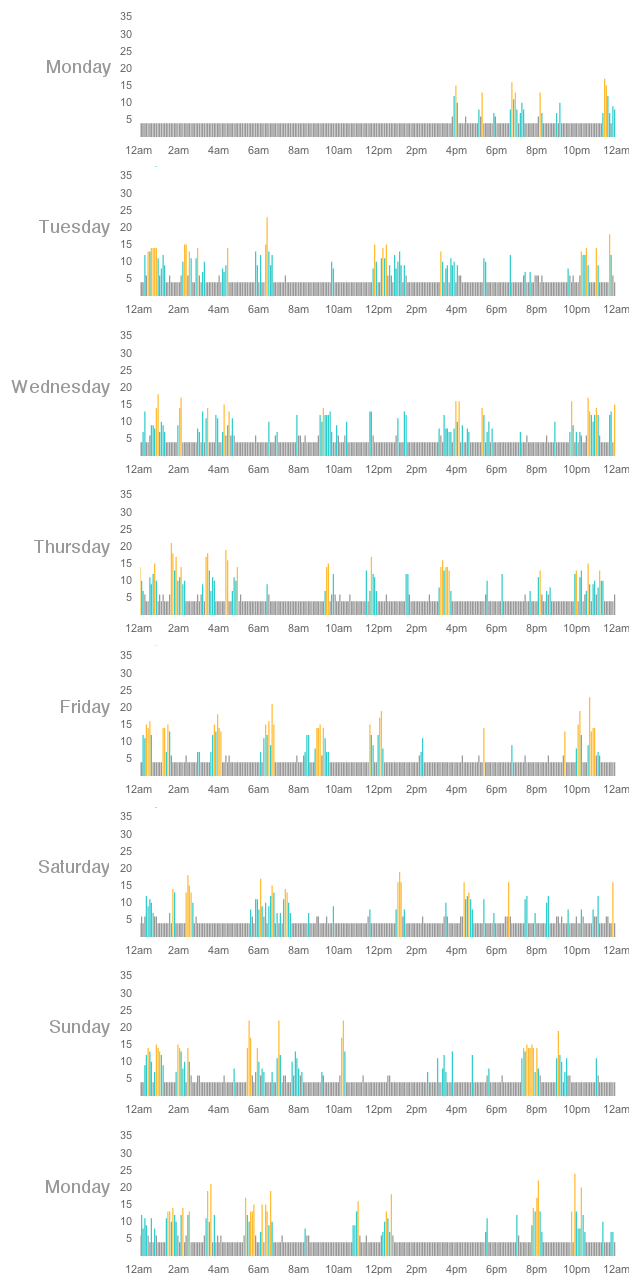
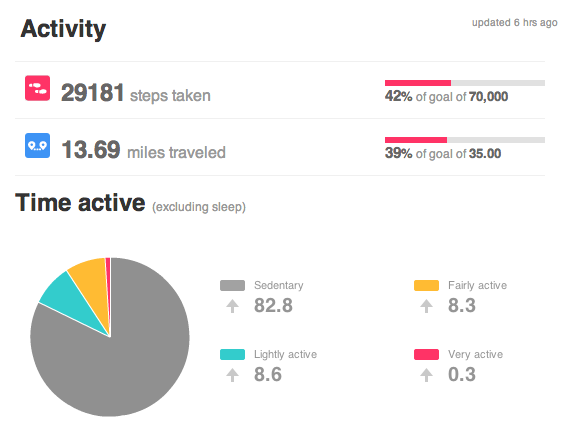
A few observations:
- Looking at the daily breakdowns, the general pattern would best be described as: “Sleep for an hour or two, goof off for a bit, repeat.” Sounds about right.
- Some cats can sleep up to twenty hours a day, and I would have expected Snickers to be on this end of the laziness spectrum. Even if we assume that 100% of her sedentary time is spent asleep, she still would not be able to log twenty hours. At least she is less lazy than I expected.
- When she is awake she is also much more active than I would have expected, playing for an hour or more on several occasions. Impressive.
- Friday and Saturday evenings usually mean guests, and therefore mean that Snickers will sequester herself in the basement or beneath a bed for the duration. This does not appear to affect her activity level.
Notes:
- Walking on four legs may confuse the tracker, so I would not trust the step count. Distance traveled is surely way off, as this is calculated from steps assuming a normal stride length for a bipedal six-foot-tall human. Fitbit.com did not consider 9″ a valid height (nor 12.2 lbs. a valid weight) when I created Snickers’ account. Time active is probably fairly accurate.
- I am unsure how much grooming gets picked up. Scratching around the collar may, but cat baths probably do not.
- The tracker was removed from about 1-3 P.M. on Monday (bottom) to recharge it. Fitbit’s engineers deserve praise for designing a device that can be in absolutely constant use for over two years, and still have a 40% battery level a week after its last charge.
- No change was made to Snickers’ daily routine, nor did we change how much we play with her. The only exception was when she had not walked near the Fitbit tracker’s wireless base station in a day or so, so I shut her in my office for five minutes to allow the tracker to connect and upload its data. She gave me a kind of bewildered “Why am I in here?” look when I opened the door to let her out.
Next
Snickers seems to have adjusted to the collar and Fitbit tracker fairly quickly, so now that we have a good baseline we should be able to start throwing some new cat toys into the experiment to see if they make her more active.